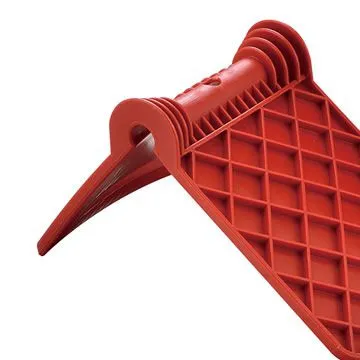Dec . 13, 2024 14:00 Back to list
t grid ceiling system
Understanding the T-Grid Ceiling System Benefits and Applications
The T-grid ceiling system has become a popular choice in modern construction, especially in commercial and institutional buildings. This system, also known as a suspended ceiling or drop ceiling, consists of a grid made from metal channels that supports ceiling tiles or panels. Understanding the key features of the T-grid ceiling system and its numerous benefits can help architects, builders, and facility managers make informed decisions.
Structure and Design
The T-grid ceiling system is composed of a network of T-shaped metal strips that form a grid framework. These grids are typically suspended from the existing ceiling structure using wire hangers or rods. The space between the main beams and cross tees creates a modular void where ceiling tiles can be inserted. This designs not only allows for aesthetic flexibility but also makes installation relatively simple and efficient.
Ceiling tiles come in a variety of materials, including mineral fiber, metal, and gypsum. Each type offers unique characteristics, such as sound absorption, fire resistance, and moisture resistance. This versatility allows designers to select materials that best meet the specific environmental conditions of their projects.
Benefits of the T-Grid Ceiling System
1. Ease of Installation One of the primary advantages of the T-grid ceiling system is its ease of installation. The grid framework can be quickly assembled by skilled workers, significantly reducing labor costs and installation time. Additionally, as the tiles are modular, replacements can be done swiftly without the need for extensive renovations.
2. Accessibility The space above a T-grid ceiling system serves as an effective conduit for electrical wiring, plumbing, and HVAC systems. This allows for easy access for maintenance and repairs, making it a practical choice for buildings that require frequent updates to their systems.
t grid ceiling system

3. Aesthetic Flexibility The T-grid ceiling system supports a variety of tile styles, colors, and textures. This flexibility allows architects and interior designers to create visually appealing environments tailored to the intended use of the space—from corporate offices to educational institutions and healthcare facilities.
4. Sound Insulation Many ceiling tiles are designed with acoustical properties, helping to absorb sound and reduce noise pollution in busy environments. This characteristic can enhance comfort levels in open office spaces, conference rooms, and classrooms, contributing to improved mental well-being and productivity.
5. Energy Efficiency The air space created by the suspended ceiling can contribute to improved thermal insulation and energy efficiency in buildings. By minimizing the volume of air that needs to be heated or cooled, energy consumption can be reduced, leading to lower utility bills.
6. Fire Resistance and Safety Certain materials used in T-grid ceiling systems are inherently fire-resistant, offering an additional layer of safety in commercial buildings. The design can also assist in maintaining building codes and safety regulations that require specific fire ratings.
Applications
The T-grid ceiling system is widely utilized across various sectors. In commercial spaces, it is prevalent in offices, retail stores, and restaurants where both functionality and aesthetics are essential. In institutional environments, it can be found in schools, hospitals, and governmental buildings, where durability and accessibility are paramount. Moreover, T-grid ceilings are suitable for renovation projects as they can easily integrate with existing structures.
In conclusion, the T-grid ceiling system is a versatile solution that meets the demands of modern construction. Its myriad benefits—ease of installation, accessibility for maintenance, aesthetic flexibility, sound insulation, energy efficiency, and safety—make it an ideal choice for a wide range of applications. As buildings continue to evolve, the T-grid ceiling system will likely remain a staple in contemporary design, providing both functionality and style.
-
Durable Ceiling T Grid Systems | Easy InstallationNewsAug.29,2025
-
PVC Gypsum Ceiling: Durable, Laminated Tiles for Modern SpacesNewsAug.28,2025
-
Pvc Gypsum Ceiling Is DurableNewsAug.21,2025
-
Mineral Fiber Board Is DurableNewsAug.21,2025
-
Ceiling Tile Clip Reusable DesignNewsAug.21,2025
-
Ceiling T Grid Modular DesignNewsAug.21,2025







